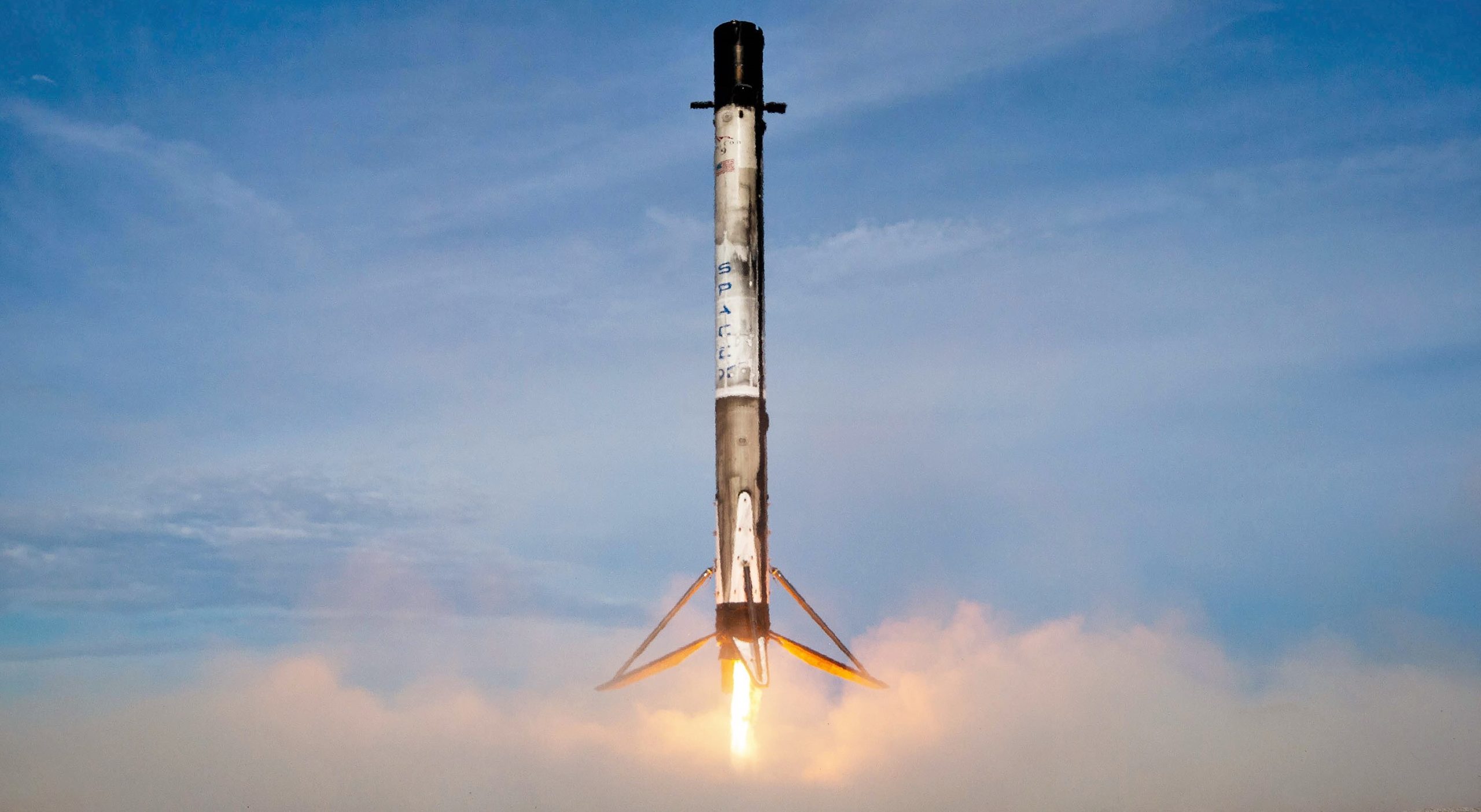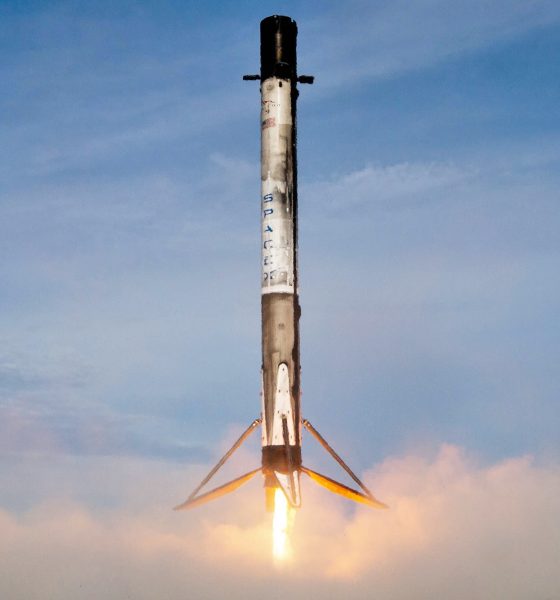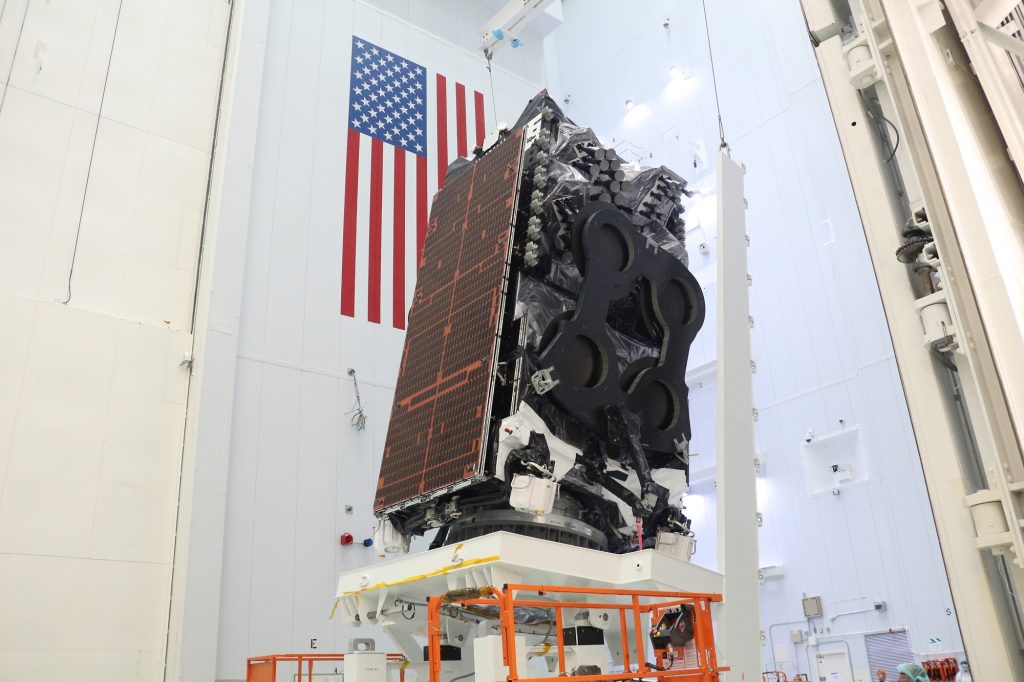

News
SpaceX Falcon 9 fires up ahead of second to last 2019 launch and landing
SpaceX has successfully static fired a Falcon 9’s booster engines ahead of its second to last launch and landing of 2019, on track to make December the company’s busiest month of the year.
About a month after successfully lofting 60 Starlink satellites and 11 days after sending Cargo Dragon on its way to the ISS for CRS-19, SpaceX has two more launch scheduled in 2019: Kacific-1 no earlier than (NET) December 16th and Starlink-2 NET December 30th.

For SpaceX, the turn of the decade will mark the end of an historic year – let alone decade – of milestones for the intrepid commercial space company, including achievements like’s Crew Dragon flawless orbital launch debut, the fourth flight of a refurbished Falcon 9 booster, the first-ever reuse of a flight-proven payload fairing, and a duo of spectacular Starhopper flight tests to name just a few.
First up, SpaceX will fly twice-flown Falcon 9 booster B1056.3 for the third time. B1056.3 previously supported CRS-17 and CRS-18, back to back Cargo Dragon space station resupply missions for NASA. Currently targeting a Monday, December 16th launch, SpaceX is set to place the jointly-owned JCSAT-18/Kacific-1 broadband communication satellite for Japan’s Sky Perfect JSAT Corp. and Singapore’s self-proclaimed “next-generation broadband satellite operator”, Kacific Broadband Satellites.
According to a Kacific, after deploying from Falcon 9 and circularizing into a geostationary orbit some 22,000 miles (36,000km) over the Asia-Pacific region, the JCSAT-18/Kaficic-1 satellite “will stream broadband to 25 nations in South East Asia and the Pacific Islands via 56 spot beams.” All told, the satellite will offer a maximum bandwidth of 70 gigabits per second (Gbps) with each spot beam serving up to 1.25 Gbps.
Kacific was founded in 2013 by CEO Christian Patouraux to provide desperately needed communication services to the Asia Pacific region, “where high prices and unsuitable technology were prohibiting access.” Kacific looks to “provide high speed, affordable and accessible internet to extra-urban, rural, and remote users” with Kacific-1, the company’s first (partially) dedicated satellite.
Ahead of Monday’s launch attempt, the JCSAT-18/Kacific-1 satellite was fully encapsulated inside Falcon 9’s payload fairing, both halves of which SpaceX will try to catch with recovery vessels GO Ms. Tree and GO Ms. Chief in what will be the company’s first simultaneous catch attempt ever. Meanwhile, B1056 has its own recovery attempt penciled in and drone ship Of Course I Still Love You (OCISLY) departed Port Canaveral on December 12th, headed ~650 km (400 mi) downrange. OCISLY arrived at its recovery zone earlier today, as did Ms. Tree and Ms. Chief, now stationed about 140 km (90 mi) further East.
As per usual, Falcon 9 B1056.3 and its expendable upper stage performed a wet dress rehearsal (WDR) and static fire, identical to launch operations minus the rocket actually lifting off. The Kacific-1 mission’s December 16th launch trajectory allows for an 88-minute window from 7:10 pm – 8:38 pm EST (0010-0138 UTC, December 17) and weather forecasts are currently 90% go.
As mentioned, twin fairing recovery vessels GO Ms. Tree and GO Ms. Chief departed Port Canaveral on December 13th in a bid to attempt their first simultaneous Falcon fairing recovery, meaning that each ship will attempt to catch one parasailing fairing half. This mission is technically the second time both ships have port left together for a recovery, but their first whole-airing catch attempt was called off before it could start due to rough seas and high winds in the Atlantic Ocean. Prior to being rechristened Ms. Tree, Mr. Steven suffered severe damage during a planned February 2019 catch attempt, losing its net and two of four arms after the ship was caught in high seas.

Following Kacific-1, SpaceX’s final launch of 2019 – barring delays – will likely be the company’s second dedicated Starlink v1.0 mission, a 60-satellite payload that will almost certainly make SpaceX the world’s largest commercial satellite operator. Starlink-2 is scheduled to launch NET December 30th.
SpaceX will stream Falcon 9’s Kacific-1 launch and landing and the webcast will kick off some 15 minutes before liftoff, NET 6:55 pm ET (23:55 UTC), December 16th.
Check out Teslarati’s newsletters for prompt updates, on-the-ground perspectives, and unique glimpses of SpaceX’s rocket launch and recovery processes.

News
Tesla FSD fleet is nearing 7 billion total miles, including 2.5 billion city miles
As can be seen on Tesla’s official FSD webpage, vehicles equipped with the system have now navigated over 6.99 billion miles.

Tesla’s Full Self-Driving (Supervised) fleet is closing in on almost 7 billion total miles driven, as per data posted by the company on its official FSD webpage.
These figures hint at the massive scale of data fueling Tesla’s rapid FSD improvements, which have been quite notable as of late.
FSD mileage milestones
As can be seen on Tesla’s official FSD webpage, vehicles equipped with the system have now navigated over 6.99 billion miles. Tesla owner and avid FSD tester Whole Mars Catalog also shared a screenshot indicating that from the nearly 7 billion miles traveled by the FSD fleet, more than 2.5 billion miles were driven inside cities.
City miles are particularly valuable for complex urban scenarios like unprotected turns, pedestrian interactions, and traffic lights. This is also the difference-maker for FSD, as only complex solutions, such as Waymo’s self-driving taxis, operate similarly on inner-city streets. And even then, incidents such as the San Francisco blackouts have proven challenging for sensor-rich vehicles like Waymos.
Tesla’s data edge
Tesla has a number of advantages in the autonomous vehicle sector, one of which is the size of its fleet and the number of vehicles training FSD on real-world roads. Tesla’s nearly 7 billion FSD miles then allow the company to roll out updates that make its vehicles behave like they are being driven by experienced drivers, even if they are operating on their own.
So notable are Tesla’s improvements to FSD that NVIDIA Director of Robotics Jim Fan, after experiencing FSD v14, noted that the system is the first AI that passes what he described as a “Physical Turing Test.”
“Despite knowing exactly how robot learning works, I still find it magical watching the steering wheel turn by itself. First it feels surreal, next it becomes routine. Then, like the smartphone, taking it away actively hurts. This is how humanity gets rewired and glued to god-like technologies,” Fan wrote in a post on X.
News
Tesla starts showing how FSD will change lives in Europe
Local officials tested the system on narrow country roads and were impressed by FSD’s smooth, human-like driving, with some calling the service a game-changer for everyday life in areas that are far from urban centers.

Tesla has launched Europe’s first public shuttle service using Full Self-Driving (Supervised) in the rural Eifelkreis Bitburg-Prüm region of Germany, demonstrating how the technology can restore independence and mobility for people who struggle with limited transport options.
Local officials tested the system on narrow country roads and were impressed by FSD’s smooth, human-like driving, with some calling the service a game-changer for everyday life in areas that are far from urban centers.
Officials see real impact on rural residents
Arzfeld Mayor Johannes Kuhl and District Administrator Andreas Kruppert personally tested the Tesla shuttle service. This allowed them to see just how well FSD navigated winding lanes and rural roads confidently. Kruppert said, “Autonomous driving sounds like science fiction to many, but we simply see here that it works totally well in rural regions too.” Kuhl, for his part, also noted that FSD “feels like a very experienced driver.”
The pilot complements the area’s “Citizen Bus” program, which provides on-demand rides for elderly residents who can no longer drive themselves. Tesla Europe shared a video of a demonstration of the service, highlighting how FSD gives people their freedom back, even in places where public transport is not as prevalent.
What the Ministry for Economic Affairs and Transport says
Rhineland-Palatinate’s Minister Daniela Schmitt supported the project, praising the collaboration that made this “first of its kind in Europe” possible. As per the ministry, the rural rollout for the service shows FSD’s potential beyond major cities, and it delivers tangible benefits like grocery runs, doctor visits, and social connections for isolated residents.
“Reliable and flexible mobility is especially vital in rural areas. With the launch of a shuttle service using self-driving vehicles (FSD supervised) by Tesla in the Eifelkreis Bitburg-Prüm, an innovative pilot project is now getting underway that complements local community bus services. It is the first project of its kind in Europe.
“The result is a real gain for rural mobility: greater accessibility, more flexibility and tangible benefits for everyday life. A strong signal for innovation, cooperation and future-oriented mobility beyond urban centers,” the ministry wrote in a LinkedIn post.
News
Tesla China quietly posts Robotaxi-related job listing
Tesla China is currently seeking a Low Voltage Electrical Engineer to work on circuit board design for the company’s autonomous vehicles.

Tesla has posted a new job listing in Shanghai explicitly tied to its Robotaxi program, fueling speculation that the company is preparing to launch its dedicated autonomous ride-hailing service in China.
As noted in the listing, Tesla China is currently seeking a Low Voltage Electrical Engineer to work on circuit board design for the company’s autonomous vehicles.
Robotaxi-specific role
The listing, which was shared on social media platform X by industry watcher @tslaming, suggested that Tesla China is looking to fill the role urgently. The job listing itself specifically mentions that the person hired for the role will be working on the Low Voltage Hardware team, which would design the circuit boards that would serve as the nervous system of the Robotaxi.
Key tasks for the role, as indicated in the job listing, include collaboration with PCB layout, firmware, mechanical, program management, and validation teams, among other responsibilities. The role is based in Shanghai.
China Robotaxi launch
China represents a massive potential market for robotaxis, with its dense urban centers and supportive policies in select cities. Tesla has limited permission to roll out FSD in the country, though despite this, its vehicles have been hailed as among the best in the market when it comes to autonomous features. So far, at least, it appears that China supports Tesla’s FSD and Robotaxi rollout.
This was hinted at in November, when Tesla brought the Cybercab to the 8th China International Import Expo (CIIE) in Shanghai, marking the first time that the autonomous two-seater was brought to the Asia-Pacific region. The vehicle, despite not having a release date in China, received a significant amount of interest among the event’s attendees.








